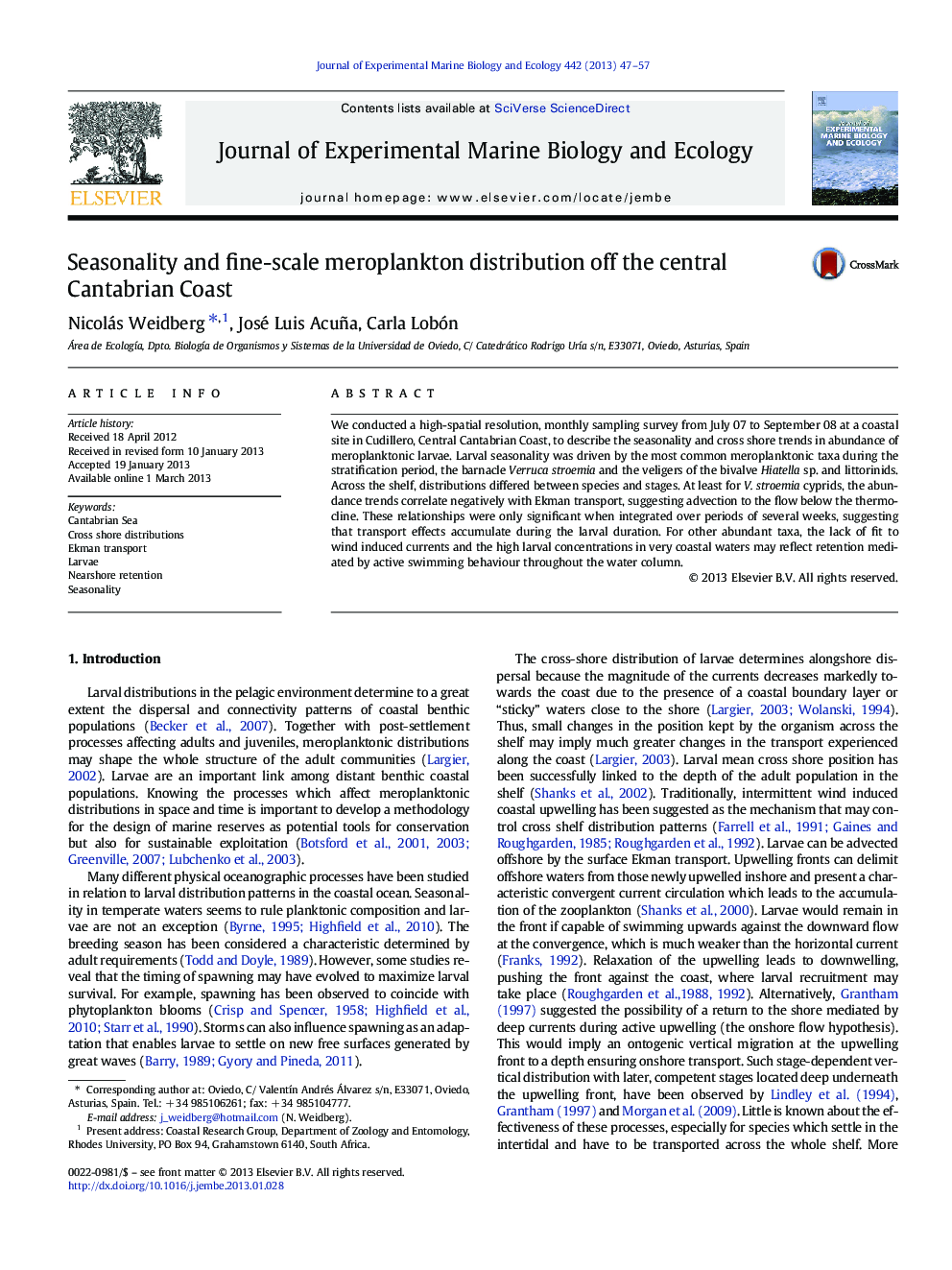| Article ID | Journal | Published Year | Pages | File Type |
|---|---|---|---|---|
| 4395688 | Journal of Experimental Marine Biology and Ecology | 2013 | 11 Pages |
We conducted a high-spatial resolution, monthly sampling survey from July 07 to September 08 at a coastal site in Cudillero, Central Cantabrian Coast, to describe the seasonality and cross shore trends in abundance of meroplanktonic larvae. Larval seasonality was driven by the most common meroplanktonic taxa during the stratification period, the barnacle Verruca stroemia and the veligers of the bivalve Hiatella sp. and littorinids. Across the shelf, distributions differed between species and stages. At least for V. stroemia cyprids, the abundance trends correlate negatively with Ekman transport, suggesting advection to the flow below the thermocline. These relationships were only significant when integrated over periods of several weeks, suggesting that transport effects accumulate during the larval duration. For other abundant taxa, the lack of fit to wind induced currents and the high larval concentrations in very coastal waters may reflect retention mediated by active swimming behaviour throughout the water column.
► We sampled meroplankton in thirteen quasi-monthly, very nearshore transects. ► Barnacle nauplii prevailed in Spring and veligers in Summer. ► Mean distance offshore was uncorrelated with upwelling index in larvae of 6 taxa. ► The correlation was negative at least in larvae of 1 taxa. ► These correlations were detected using several weeks-averaged upwelling indexes.
